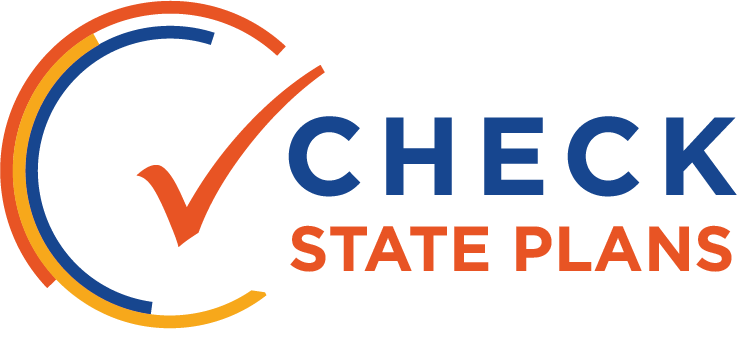
LOUISIANA
- Overview of Louisiana's Plan
- Equity
- Strengths
- Improvements
- Coherent and Aligned Vision for Improving Outcomes
- Strategic Use of Funding and Alignment of Resources
- Rigorous Review Process
- Continuous Improvement, Monitoring and Evaluation
- Evidence-Based Interventions
- Capacity Building and Autonomy
- Engagement
- Sustainability
Promise to Practice Overview
Equity
Louisiana’s approach to school improvement in grounded in the belief that every child should receive on-grade level instruction through high-quality curriculum and instruction. The state has identified nearly half of schools as in need of receiving some form of intervention, though there are concerns that the state could do more with its accountability system to identify underperforming groups of students. The state’s unified “Super App,” which streamlines applications to all federal programs into one application, requires that districts demonstrate they are using a high-quality curriculum, and that teachers have received training to implement the curriculum.
Strengths
Louisiana has in place a strong vision for school improvement, with a focus on high-quality instruction and high-quality curricula. The School Redesign summit and purposeful connection of districts to one another and to potential third-party partners who could help advance their work is also a strong, innovative component of Louisiana’s efforts. The state also includes school suspension as a criterion for targeted support an intervention.
Improvements
Louisiana might consider strengthening the messaging around their school improvement work by clearly articulating a specific vision for persistently struggling schools that is distinct from their overarching work.
Coherent and Aligned Vision for Improving Outcomes:
Strategic Use of Funding and Alignment of Resources:
Rigorous Review Process:
Continuous Improvement, Monitoring and Evaluation:
Evidence-Based Interventions:
Capacity Building and Autonomy:
Engagement:
Sustainability:
Click through the tabs on the left to see how Louisiana scored in each category.
Equity
How well does the state’s approach to school improvement include focused attention on supporting underserved students and closing the achievement gap? Does the state require LEAs to maintain an equity focus in their school improvement plans, activities and resource allocations?
Louisiana believes that every student, including English learners and students with disabilities, must receive on-grade level instruction through high-quality curriculum and instruction. Should a student need additional support or intervention, the Louisiana Department of Education stresses that the instruction must be scaffolded so that the student continues to access on-grade level curriculum. The state views fundamental belief as the foundation underpinning their school improvement work and approach to equity – access to high quality teaching and a rigorous on-grade level curriculum.
This year, under the new accountability system the state will identify approximately half of the 1,300 schools in the state as needing some form of intervention – comprehensive, targeted or urgent support. That said, concern remains that the state has not done all it can to indicate through its accountability system when schools have underperforming groups of students, as schools with achievement gaps may receive a B overall grade.
Under the states unified “Super App”, which streamlines all federal programs into one comprehensive application, districts, regardless of identification status, must demonstrate that they are using a high quality curriculum in all grade levels and all teachers have been trained to teach the new curriculum. Louisiana also has established a minimum bar for approving district plans, which must include: the adoption of a high quality benchmark assessment, partnership with a preparation provider, and participation in the content leader program.
Strengths
How is the state thoughtfully leveraging ESSA’s flexibility to put in place the necessary policies and procedures that create an enabling environment for effective and sustained school improvement, and that consider state/local lessons learned from past efforts? What parts of the state’s turnaround strategy or guidance to LEAs were strongest or exemplary?
Louisiana has in place a strong vision for school improvement, with a focus on high-quality instruction and high-quality curricula. The application and approval process for districts identified as low-performing is clear and aligned to the state’s theory of action. The rigor of the state’s approval process is evident in the fact that the state did not approve the majority of district plans submitted during the first round of review, opting instead to push districts to develop stronger improvement efforts.
The Direct Student Services allocation that the state is providing to districts in order to expand enrichment and advanced coursework opportunities for students K-12 is also a strength, even more so that the state provides guidance for how these funds might be used in underperforming schools. This is an indication that the state is using these funds as a lever to close opportunity gaps.
The School Redesign summit and purposeful connection of districts to one another and to potential third-party partners who could help advance their work is also a strong, innovative component of Louisiana’s efforts. Finally, including of out of school suspension as a criterion for targeted support and intervention is a smart tactic. This coupled with the fact that targeted status can put a school on the continuum toward comprehensive support and improvement is an incentive for districts to address exclusionary discipline practices.
Improvements
How can the state improve its turnaround efforts? What parts of the state’s strategy or guidance to LEAs were unclear? What risks and challenges might the state face with its current approach?
Louisiana might consider strengthening the messaging around their school improvement work by clearly articulating a specific vision for persistently struggling schools that is distinct from their overarching work. There are nuances and contextual differences that may warrant defining a specific message. The state’s approach is quite prescriptive, which has its benefits, but may show diminishing returns in schools that are not improving.
Coherent and Aligned Vision for Improving Outcomes
How well does the state articulate a coherent vision or theory of action that drives their school improvement efforts? Is this vision aligned with the state’s accountability system and goals for closing the achievement gap?

Louisiana’s vision for school improvement is coherent and focuses on four strategies: improving daily instruction for students by providing high-quality curricula; expanding professional development for educators; and improving the recruitment and retention of high-quality educators. From there, the state is focusing on empowering districts and providing autonomy for educators closest to the student.
Under the new ESSA aligned accountability system, the state will identify approximately half of the schools for either comprehensive intervention or urgent intervention. Schools identified for urgent support and intervention have at least one group of students whose performance is equivalent to an “F” rating for at least two years or the out-of-school suspension rate is twice that of the national average for three years. This year, over 730 schools will be identified, comprising 56% of the schools in the state. Louisiana is mandating that any school, regardless of the identification status must submit a plan to the state describing how they will address the inequities and gaps within the schools. The state has also outlined that every student, even those that need significant support interventions, must continue to access the on-grade level curriculum in an inclusive setting.
Strategic Use of Funding and Alignment of Resources
Is the state allocating funding in a way that is strategic and maximizes resources? Are LEAs expected to prioritize improvement efforts that address the underlying performance issues?

Louisiana is awarding funding for school improvement through a competitive grant process. All districts with comprehensive support schools are required to submit plans for both approval and funding. In the first two rounds of the school redesign project, the state granted funds only to the districts they determined had the most coherent plans for improvement as measured by a state-created rubric, which focuses on curricula, professional development, and teacher workforce issues and is therefore directly in line with the state’s theory of action. Some districts received approval without any funding, and others were rejected and required to resubmit for approval and grant funding for interventions.
The state even gives guidance for how a district’s allocation for Direct Student Services – to ensure that students have enrichment, advanced coursework, and early post-secondary opportunities – is should be a prioritized for school improvement efforts. Additional information is needed to understand how the state will support districts who are not awarded competitive funds.
Rigorous Review Process
Is the state applying rigorous criteria and review processes to ensure resources will be used to support effective school improvement efforts? Is the state prioritizing funding to LEAs who demonstrate the greatest need for school improvement funding (including LEAs with a high percentage of CSI and TSI schools) and the strongest commitment to school improvement?

Louisiana has a very rigorous review process in place using its School Redesign rubric. The rubric includes seven domains – Needs Assessment; Budget: Core Academics; Educator Workforce; District Structures; Direct Student Supports; Supporting Subgroups of Diverse Learners. Each category is scored on a scale from 0 – 3 points. During the first round of review this year, the state received 32 district applications, and only 18 of them were approved with funding. The remaining applicants were invited to improve their proposals for the second round of funding. The second round of applications, 59 school systems applied and only 41 received approval and funding.
Louisiana has shown that they are serious about the quality of the plans, as 15 district plans were rejected for approval. These districts must work to better their plans and resubmit to the state. There is a question regarding the degree to which this process ensures that districts with the greatest need receive the resources to improve, but the state’s high standard for quality is very commendable.
Continuous Improvement, Monitoring and Evaluation
Does the state have a robust, data-driven process to monitor LEAs’ implementation of the school improvement plans within their district? Did the state establish clear milestones to ensure improvement over time, and within four years?

Louisiana established ambitious milestones for raising accountability standards over time using an A-F grading scale, and plans to reevaluate funding allocations after one year.
The application requires that districts define goals and metrics that will be reviewed annually during the application renewal process, and districts must adopt a standards-aligned benchmark assessment to provide interim indicators of student academic progress. These components, if implemented well, will help to ensure that outcomes are monitored with high quality, relevant data.
The extent to which the criteria for reevaluating funding and a district’s ability to hit its goals are aligned. However, state documents did not go so far as to say that a district that does not hit its goals will be denied funding during the subsequent year.
Evidence-Based Interventions
To what extent is the state mandating LEAs use evidence-based strategies in their improvement efforts? Does the state provide guidance and supports to LEAs to help them identify and implement the most effective strategies based upon their needs?

Louisiana requires districts to choose evidence-based interventions, describe the evidence level based on ESSA requirements, and link to the research that supports the intervention in their applications. The state encourages districts to partner with national organizations or vendors to implement their strategies effectively, and hosted a summit to, among other things, connect districts with qualified external partners.
The state also provides access to regional support managers whom districts may contact for support in their improvement process, and created a website that includes resources about evidence-based interventions which district leaders can access.
Capacity Building and Autonomy
How well does the state articulate, delineate or set parameters around which interventions and responsibilities belong to the state, LEA and/or school? Does the state provide support or guidance to help LEAs identify and reduce barriers to school improvement? Does the state have a framework or process to support and monitor outside entities who partner with the state, LEAs or schools in school improvement efforts?

Louisiana’s school redesign summit was intended to train district leaders and staff to conduct needs assessments, and the state makes resources available during the process on their website.
Louisiana has articulated a clear delineation around the school improvement and intervention continuum. Districts get first opportunity to intervene, with annual progress monitoring by state. After the school is still rated an F after four consecutive years, the state will seek to apply a more rigorous intervention – up to and including the Recovery School District absorbing the schools. Louisiana has also highlighted examples of agreements for more rigorous interventions that are negotiated partnerships between the state and districts.
The state provides support and monitors progress through the assigned Regional Turnaround Support Manager. The department of education has three such positions supporting the regional networks of schools across the state. These defined roles should help identify and reduce barriers to school improvement by ensuring that the state and district know for what they are responsible. That said, while the state’s intention and plan is strong, a lot depends on the state’s own capacity and strength of implementation.
It is unclear from the materials available whether the state has a specific plan to support and monitor third party partners who engage in school improvement work. It appears that Louisiana has focused on vetting these partners and confirming their prior effectiveness as a test of future effectiveness.
Engagement
Does the state require LEAs to engage with stakeholders such as parents and community members in the development and implementation of their school improvement plans? Does the state provide sufficient guidance and resources to LEAs to effectively do so, helping them foster local buy-in and promote sustainability?

Louisiana has taken a strong position on public transparency, as its legislature passed ACT 555, a state law requiring every school identified for support to host a public review of school redesign plans. These plans are required to include school and student performance data as well as a timeline for achieving the proposed goals. As mentioned earlier, the state has offered technical assistance, statewide summits, and partner connections as resources to support districts in their school improvement work. Engagement is a prominent element within the revised school redesign application and within the monitoring protocols used by the district support staff when they conduct site visits. This allows the Louisiana Department of Education to track whether or not districts have met this provision of Act 555, though additional information is needed to determine the quality of the engagement efforts and the guidance offered to districts throughout plan implementation.
Engagement
Does the state have a plan in place to review the school improvement efforts statewide and evaluate the impact and effectiveness? Does the state have a process in place to support LEAs and schools by enhancing their capacity to maintain their improvement efforts upon exiting identification and intervention?

There is no specific mention in the materials reviewed of a formal plan to evaluate the impact and effectiveness of the school improvement efforts – either via an internal research and evaluation team or a third-party researcher. Louisiana indicates they will conduct an internal annual review process to evaluate the progress of district implementation of their plans. In addition, in their ESSA application, the state mentions the work that the Tulane University’s Education Research Alliance and Stanford University’s Center for Research on Education Outcomes (CREDO) regarding the efficacy of charter schools engaged in school turnaround work. Louisiana could consider how to leverage these partnerships to evaluate the impact and effectiveness of the state’s efforts. The state also notes that more in the area of sustainability is forthcoming in its new “Super App,” but that information is not yet available.
- Overview of Louisiana's Plan
- Goals
- Standards and Assessments
- Indicators
- Academic Progress
- All Students
- Identifying Schools
- Supporting Schools
- Exiting Improvement Status
- Continuous Improvement
 Overview
Overview
Strengths
- Louisiana has a high-quality plan that presents a strong vision for students in the state, and it sets high expectations for results.
- The state’s plan is grounded in strong standards and assessments, it places a strong emphasis on academic proficiency and growth, and its clearly defined school-rating system will ensure that stakeholders, schools, and students will have a clear understanding of how schools are serving all children.
- Louisiana’s inclusion of science and social studies assessments is a strong element of its plan, and it has compiled a novel set of measures to assess high school and college readiness.
- The state’s plan goes well beyond the minimal federal requirement to identify low-performing schools, and the state has shown an impressive commitment to significantly raising its expectations over time.
- Louisiana’s school-improvement model is easy to understand and is coupled with clear timelines and expectations for improvement, and the state’s willingness to take over schools and direct dramatic school-improvement efforts through its Recovery School District authority is another significant strength of Louisiana’s plan.
Weaknesses
- There’s some concern that Louisiana does not do enough to flag schools with subgroups of students who are not well served by the school. It does not specifically include student subgroup scores in its statewide A-F grading system, and, although it will pick up a number of “targeted support” schools on the back end, there’s a risk that parents and educators will pay more attention to the overall grade than the targeted support flag.
- The state’s plan also may not adequately address schools with low-performing student groups that remain low performing over long periods of time, and its exit criteria for targeted support schools could allow schools to exit improvement status after only minor improvements in subgroup scores.
- The state could also add specificity on how it will respond to some of the challenges it identifies. For example, the state proposes to identify 43 percent of its schools as in need of “Urgent Intervention” for students with disabilities, but it does not articulate a detailed plan for how it will respond to that challenge.
Click through the tabs on the left to see how Louisiana scored in each category.
GOALS
Louisiana outlines an ambitious vision and attainable goals backed by clear data and a strong rationale supporting its interim targets.
The state is proposing to sustain its recent gains and annually increase its proficiency rates by 2.5 percentage points per year from 2018-2025.
Louisiana has set the same final target for all groups of students, and it expects faster progress for groups that are starting further behind. Similarly, the state has made strong gains over time in boosting high school graduation rates, and it aims to continue that progress through at least 2025.
Louisiana has committed to increasing standards and expectations, even as the plan is being implemented.
The accountability system will adjust “ambitiously and cautiously” in order to set high expectations up front while giving time for schools to ramp up to meet them.
Louisiana has provided placeholder goals for English language proficiency.
Louisiana is waiting for more current data on English language proficiency and has provided placeholder goals that it plans to update in the near future. However, the state is planning to allow individual students seven years to attain English-language proficiency, which may be too long, particularly since the state provides data suggesting that the average student has historically made it in only four years.
STANDARDS AND ASSESSMENTS

Louisiana designed its system to ensure that expectations for A-rated schools are consistent with all such schools nationwide.
Louisiana fully implemented college- and career-ready standards in 2014, and then adjustments made through stakeholder input led to the adoption of new Louisiana State Standards for the 2016-17 school year.
The state has also built incentives for schools to accelerate students and to emphasize subjects beyond reading and math. For example, Louisiana will reward schools that get more students into Algebra 1 by eighth grade, and it will test high school students in science and history, in addition to reading and math.
The state has a long track record using its current state assessments, the LEAP, and the state’s high school end-of-course tests.
In addition, the state requires all high school juniors to take the ACT, a college-ready entrance exam. However, the state does not provide much information about the accommodations that are available for English learners and students with disabilities, particularly for the ACT and WorkKeys. Without the ability to use accommodations and submit valid scores, some of the key benefits of using the ACT may not extend fully to all students. The state indicates that it translates its mathematic assessments to Spanish, but it does not explain why other assessments are not translated as well.
Finally, the state should provide the steps it will take to ensure that it does not exceed the 1 percent cap on participation in the alternate assessment for students with the most significant cognitive disabilities.
INDICATORS
Louisiana has proposed a small, but high-quality list of indicators focused on academic achievement and success.
The state deserves credit for including achievement not just in English language arts and math, but also history and science, which will help address concerns about curriculum narrowing. To provide schools with a strong incentive to care about participation rates, schools will earn zero points on the test-based indicators for students who do not participate in statewide assessments. The state has also proposed innovative, age-appropriate measures for middle and high schools that incorporate measures beyond test results.
Louisiana does not yet have a separate “school quality or student success” indicator for elementary schools.
The state proposes to add a promising “Interests and Opportunities” indicator in 2019-2020. In the meantime, Louisiana could consider separating its two growth models to comply with this indicator, or it could incorporate something like chronic absenteeism.
In other grade spans, the state has developed innovative academic measures.
The Dropout Credit Accumulation Index for middle schools will measure credit accumulation through the end of ninth grade and is designed to measure how well middle schools prepare students for high school. It will create an incentive for schools to work on middle school and high school alignment, and to make sure students are ready for success at the next level.
Louisiana is encouraging more students to complete more advanced diplomas.
For high schools, the state includes a promising “Strength of Diploma” measure that gives schools credit for helping more of their graduates taking and passing AP/IB/CLEP tests, earning college credit through dual-enrollment courses, earning industry credentials, or completing other types of high school diplomas. It will be important for the state to track which students are pursuing which options, particularly for English learners and students with disabilities, who might be inappropriately pushed toward alternative diplomas.
Louisiana risks overemphasizing the highest levels of performance at the expense of masking other students.
On its assessment index, a hypothetical school with two-thirds of its students at Advanced (Level 5) and one-third at Unsatisfactory (Level 1) would earn the same number of points as a school with all of its students at Mastery (Level 4). Louisiana’s index for high school students, based on performance on ACT or WorkKeys, has a similar incentive structure. Although the above example may be extreme, Louisiana should monitor its data to ensure that it is appropriately balancing higher-level performance with its grade-level expectations.
ACADEMIC PROGRESS
Louisiana has created strong incentives for schools to care about proficiency and growth.
Louisiana is unique in that its testing schedule allows it to measure growth in high schools, whereas most states are not able to measure student growth after middle school.
The state’s achievement measure awards points on a graduated scale that gives students credit for reaching higher levels of performance. The state is planning to combine English-language proficiency into this assessment index on a proportional basis (where a school with a higher concentration of English learners would have a larger share of its grade based on English-language proficiency). This is an innovative idea, but some peers indicated they would like to see the state include a separate indicator with a fixed weight.
Louisiana proposes measuring student academic growth by looking at both whether the student is on track to mastery and whether he or she is growing faster or slower than peers.
This plan will give all students a clear, transparent individual growth target that would put them on track for mastery by eighth grade. Students who meet their target earn full points. If students fail to meet those targets, they earn partial credit based on how much growth they demonstrate in comparison with similar students. For this latter measure, Louisiana may want to consider using a continuous scale rather than bucketing students into broad categories.
Finally, Louisiana deserves credit for issuing informational letter grades separately for growth and achievement, further increasing transparency and perhaps demystifying what growth looks like at a school level.
![]()
ALL STUDENTS
Louisiana is using a low subgroup threshold of 10 students, which helps identify more students in the accountability system.
The state does not include a separate weighting for disaggregated subgroup performance in its A-F grading system, but it has created back-end checks to ensure that schools are addressing the needs of very low-performing groups of students. Schools that are not serving student subgroups well will not be able to receive an “A” rating on the state’s identification system, will be designated as “Urgent Intervention Required,” and, if they remain in the category for three years, will be identified for more rigorous interventions. Schools with a group of students who would have received a “D” or “F” in any single year are designated as “Urgent Intervention Needed.”
Based on preliminary data, Louisiana expects to capture a number of schools under these definitions, ranging from 7 percent of schools with low-performing, economically disadvantaged students to 43 percent of schools with low-performing groups of students with disabilities. Louisiana deserves credit for capturing so many schools, and for running the data to estimate the potential effects of its plan, but it may want to consider the implications for identifying so many schools with low-performing groups of students with disabilities, and how it plans to respond to this challenge.
Louisiana is proposing to include students who are former English language learners and former students with disabilities in their respective groups.
Since exiting students tend to have higher performance, the state should monitor its data to ensure it is not masking the performance of students who are still receiving services. And, although Louisiana may have only small populations of Asian-American and Native American students, it should make sure to include them as subgroups worthy of attention.
IDENTIFYING SCHOOLS
Louisiana’s A-F school-rating system provides stakeholders with a single, clear, summative rating to understand school performance.
The letter grade rating provides simplicity in school identification, with those schools with a D or F for three years in a row or an adjusted cohort graduation rate less than 67 percent identified for comprehensive support on an annual basis. The state also deserves recognition for identifying schools with excessive out-of-school discipline for targeted support, and comprehensive intervention if they do not improve.
Although Louisiana will prevent schools with low-performing subgroups improvement from receiving an “A” in the school-rating system, this may be insufficient to ensure that overall school ratings reflect the performance of disaggregated subgroups. Some peers felt that Louisiana should consider including a specific weight for each disaggregated group of students to strengthen its A-F letter grades.
![]()
SUPPORTING SCHOOLS
Louisiana has shifted from a cyclical approach to monitoring to one based on performance results.
The state identifies potential risks and then sorts districts based on their ranking on those risk factors. Louisiana provides a sample “monitoring report card,” which is a transparent approach tied to the actual needs of districts.
The state will also support identified schools by assigning them a Regional Turnaround Support Manager, which will oversee their improvement. This model allows a strong connection between the school and a state-level leader who can connect them with support and resources.
Louisiana will award a “significant” portion of its 7 percent set-aside for school improvement through a competitive grant process.
The state does not define “significant,” but it does specify that it will prioritize those applications that propose to utilize high-quality external support providers.
The plan does not describe the expectations or specific supports available for schools with low-performing subgroups, or for schools with high levels of out-of-school suspensions.
Louisiana should include more detailed information about what types of planned interventions will be available to directly support the achievement of English-language learners and students with disabilities. The state should align its work here with its IDEA State Systemic Improvement Plan, which focuses on literacy and includes several good interventions.
Louisiana has set clear consequences for F-rated schools.
Louisiana requires that any F-rated school offer its students the option to transfer to another school within the district, and it will provide direct student services to students in low-performing schools. Those funds will support enrollment and participation in courses not available at the student’s home school, credit recovery or other acceleration courses, Advanced Placement or International Baccalaureate courses, or transportation to a higher-performing school.
In addition, any Louisiana school that is F-rated for four consecutive years is eligible for placement in the state’s Recovery School District (RSD), which gives the state the authority to invoke a variety of more dramatic school-improvement options. The state does not specify exactly what determines whether schools will or will not be placed in the RSD.
Exiting Improvement Status
Louisiana sets a target for comprehensive support schools to show real, sustained improvement.
Louisiana will exit comprehensive support schools after they achieve a C-rating for two consecutive years.
Louisiana proposes to exit targeted support schools if their subgroups exceed the “F” category for two consecutive years. Schools must also have an out-of-school suspension rate below a certain threshold for two years. While these provide specific targets, they imply that Louisiana accepts “D” ratings for individual subgroups, which is not very ambitious or aligned with its exit criteria for comprehensive support schools.
Continuous Improvement
Louisiana embeds continuous improvement throughout this plan.
It is also in the process of implementing a new monitoring system that will allow the state to go through a detailed analysis of risk factors that will determine the level of interventions required for success. This type of needs assessment will be accompanied by stakeholder input and feedback and will address other factors not included in the accountability framework. This will help identify high- and low-risk school districts and allow for differentiation in the intensity of state monitoring.
Louisiana has also articulated a process for incorporating a new indicator of “interests and opportunities” by the 2019-2020 school year, including data collection, stakeholder feedback, and pilot testing the measure with no stakes.
Louisiana should consult with disability groups to ensure the state sets ambitious standards and goals for students with disabilities.
Louisiana should also include strategies to ensure that parents of historically marginalized students, such as low-income students, students of color, students with disabilities, and English language learners, are consulted every step of the way.






